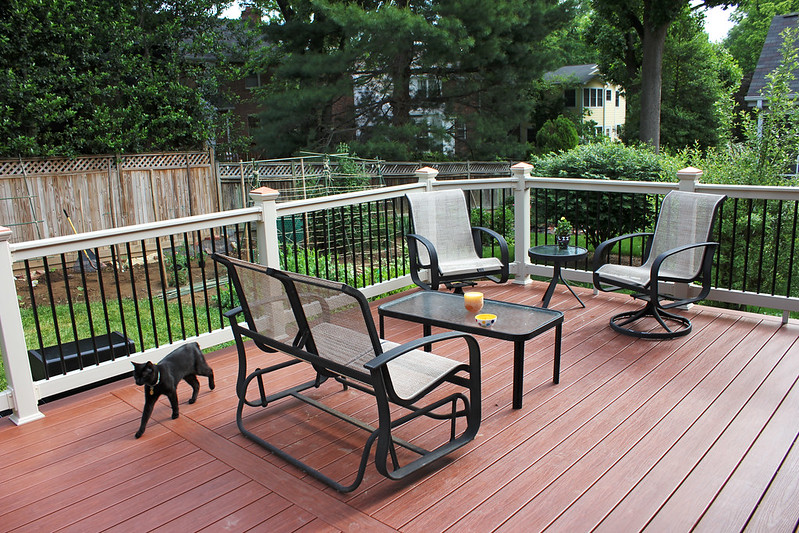Building a deck is an excellent option if you’re looking to create an outdoor space for your family to enjoy. A deck can be used for entertainment, relaxation, or as an extension of your home. But in order to build a durable deck it’s essential to use materials strong enough to withstand the elements. Here’s how you can make a deck that will last for years.

How to Build a Durable Deck
1. Choose Quality Materials
When constructing a deck, you want to ensure that the materials used are high quality and weather-resistant. Almost any composite deck company would recommend common materials used in decks, including pressure-treated lumber, cedar, redwood, and composite materials such as plastic or vinyl. Pressure-treated lumber is typically the most affordable option and is treated with chemicals, so it resists rot and insects. Cedar and redwood are more expensive, but they have natural properties that protect them from the elements. Composite materials require less maintenance than wood but cost more initially.
2. Plan Your Design Carefully
Designing your deck carefully can help ensure it stands up over time. Poor design can result in premature wear and tear or even structural failure down the road. For starters, orient your planks horizontally instead of vertically; this will give them more excellent stability against wind and rain.
Add plenty of support beams throughout the structure so that weight is evenly distributed across the joists—this should reduce sagging over time and minimize stress points around screws or nails. Ensure that stairs leading up to the deck are adequately built; misaligned steps can be hazardous!
3. Create a Strong Foundation
In order to build a durable deck, there must be a strong foundation. This will largely determine how durable it is in the long run. Footings must be dug deep enough—typically 18-24 inches—to be stable when supporting the weight of your deck structure. Once foundations are dug, concrete can be poured into each one before wooden posts are attached with metal connectors, which provide extra stability against shifting soil.
Additionally, make sure joists are properly spaced—generally 16 inches apart—to avoid sagging over time due to extra weight added by furniture or guests. These steps will ensure that your deck stays solid and sturdy throughout its lifetime!
4. Choose the Right Fasteners
The fasteners that secure your decking material are just as necessary as the materials themselves. Make sure to use stainless steel or hot-dipped galvanized fasteners for applications in damp environments like decks because they will not rust over time.
You should also make sure to use fasteners explicitly designed for your type of material. If you choose composite material, then use composite screws instead of regular wood screws, which may damage the fabric over time due to expansion and contraction caused by temperature changes.
5. Seal Your Deck Regularly
Once built, it’s essential to maintain your deck regularly to protect it from moisture and other elements. Sealing your deck will help protect it from fading due to sun exposure and staining from dirt, leaves, etc. It also helps protect against mold and mildew growth which can degrade your deck over time if left unchecked.
Plan on resealing your deck every few years depending on how frequently you use it. If there have been any significant weather events during the year, such as heavy rain or snowfall, it’s even more important to make sure any exterior wood is properly sealed.
Conclusion
We hope this article on how to build a durable deck has been helpful to you. Things don’t have to be complicated. All it takes is preparation beforehand and regular maintenance after construction is complete!
Choose quality materials when constructing your deck, whether pressure-treated lumber, cedar/redwood, or composite materials such as plastic/vinyl, then plan your design carefully to ensure that it stands up over time.
With these tips in mind, you’ll have an outdoor living space that stands up against the most challenging conditions Mother Nature can throw at it. Don’t forget that your material supplier can provide everything you need including specific advice.



